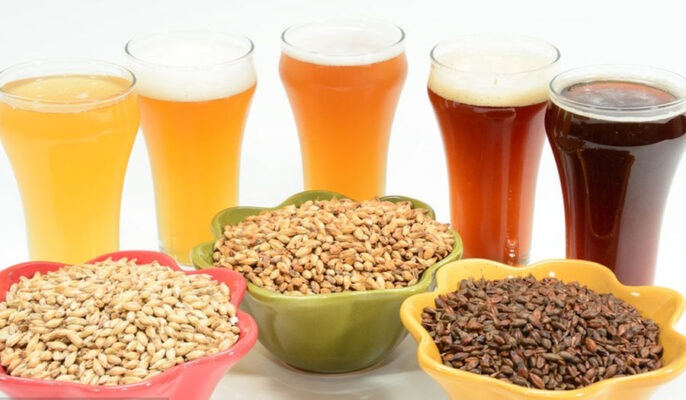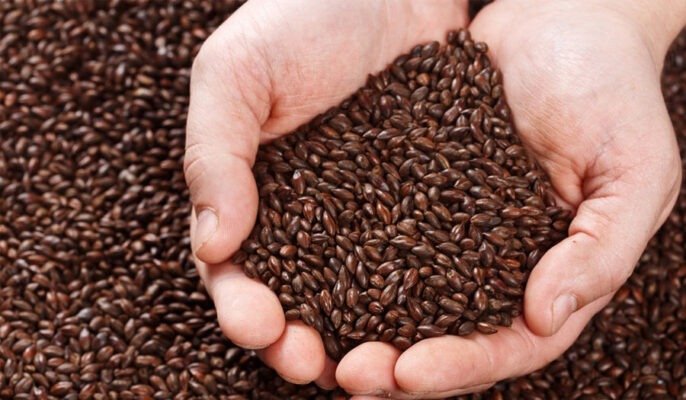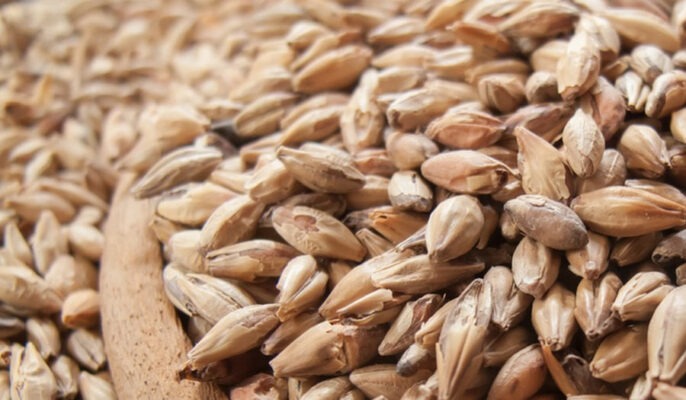Malt is one of the most important components of beer, and has more influence on the flavor of beer than any other component. When it comes to brewing beer, malt refers to a specific type of malted barley variety. The type of malt chosen for brewing will determine the final colour, flavor, mouthfeel, body and aroma.
What is Malt?
Malt is grain that has been converted to sugar. Yeast consumes sugar to produce alcohol, a process called fermentation. Grain becomes malt and malt becomes beer.
There are a wide variety of malts available to brewers. All malts fall into two broad categories: malts that can be steeped (suitable for extract brewing) and malts that need to be mashed (required for whole grain brewing).

Supplementary grain
The adjuncts are unmalted starchy substances (often understood as grains, but homebrewers have also been known to use substances such as squash and potatoes).
- Flaked barley and flaked oats
- Corn
- Wheat
- Pumpkin
- Potatoes
- Meters
- Any starchy vegetable/grain can be used as a supplement
The adjunct does not contain sugar like crystal malt, so it cannot be steeped for extract brewing. They also don’t contain enzymes like malted grains do, so need to be mashed with the base malt to extract the sugar.
Base malt
Most of the malt in a whole wheat beer is the base malt. Names based on variety, place of cultivation, or otherwise include:
- Barley malt: pale malt, pilsner malt, Vienna malt, Munich malt, mild ale malt, etc.
- Non-barley-based malts, such as wheat malt and rye malt
- High kiln malt: The main source of dark, malty lagers in Europe, and due to its unique characteristics. Munich and Vienna malts are prime examples
- American base malts are usually mild and neutral. English malt whiskey is more malty, bready, and biscuit-like.
Making malt
In the first step the grain is soaked in water until it absorbs normal weight or radicles emerge. The grain is transferred to a temperature-controlled germination room and turned . The final step is drying: the grain is placed in a kiln where the moisture is removed.
In simple terms, malting is a controlled germination process of grain that interrupts a natural process and chemical transformation that occurs in the grain. In particular, malt helps release specific enzymes that reduce the complexity of starch, breaking it down into simpler sugars that are then metabolized by yeast during beer brewing.
Depending on the drying temperature, the technique employed at this stage, etc., different malts can be obtained with different characteristics.
Malt contributes to the sensory profile of a beer, and different malts have different effects on the aromatic profile. In general, we can distinguish between basic malts and specialty malts.


Special malt
Also to the base malt, brewers often add specialty malts on a fermentable basis. They impart a unique organoleptic character to beer, or are used to brew certain styles of beer.
We can identify some special malts:
- Caramel malts: These are made without drying the grain after malting and exposing it to high heat after the starch is converted to sugar. The main types in this category are Carapis, Caravienna, Caramonaco, Crystal and Special B malt whiskeys.
- Non-caramelized malts: They do not go through the caramelization process and keep some starch that can be converted into sugar. Some of the main non-caramel specialty malts include aromatic, rye-like and brown malts.
- Roasted malt: They are exposed to high temperatures up to 250°C. They are usually used in very small amounts, enough to determine the color and flavor of the beer. The main types are chocolate malt, dark malt, roast malt and hulled malt.
Crystal malt
Crystal malt can be steeped and is often used in extracts and whole grain beers to add sweetness and color. In general, lighter colored crystal malts are more “sweet”, while darker crystal malts add a roasty or nutty flavor also to sweetness.
At the lightest end are dextrin malts. They also added dextrin for a rich taste and a hearty mouthfeel.




